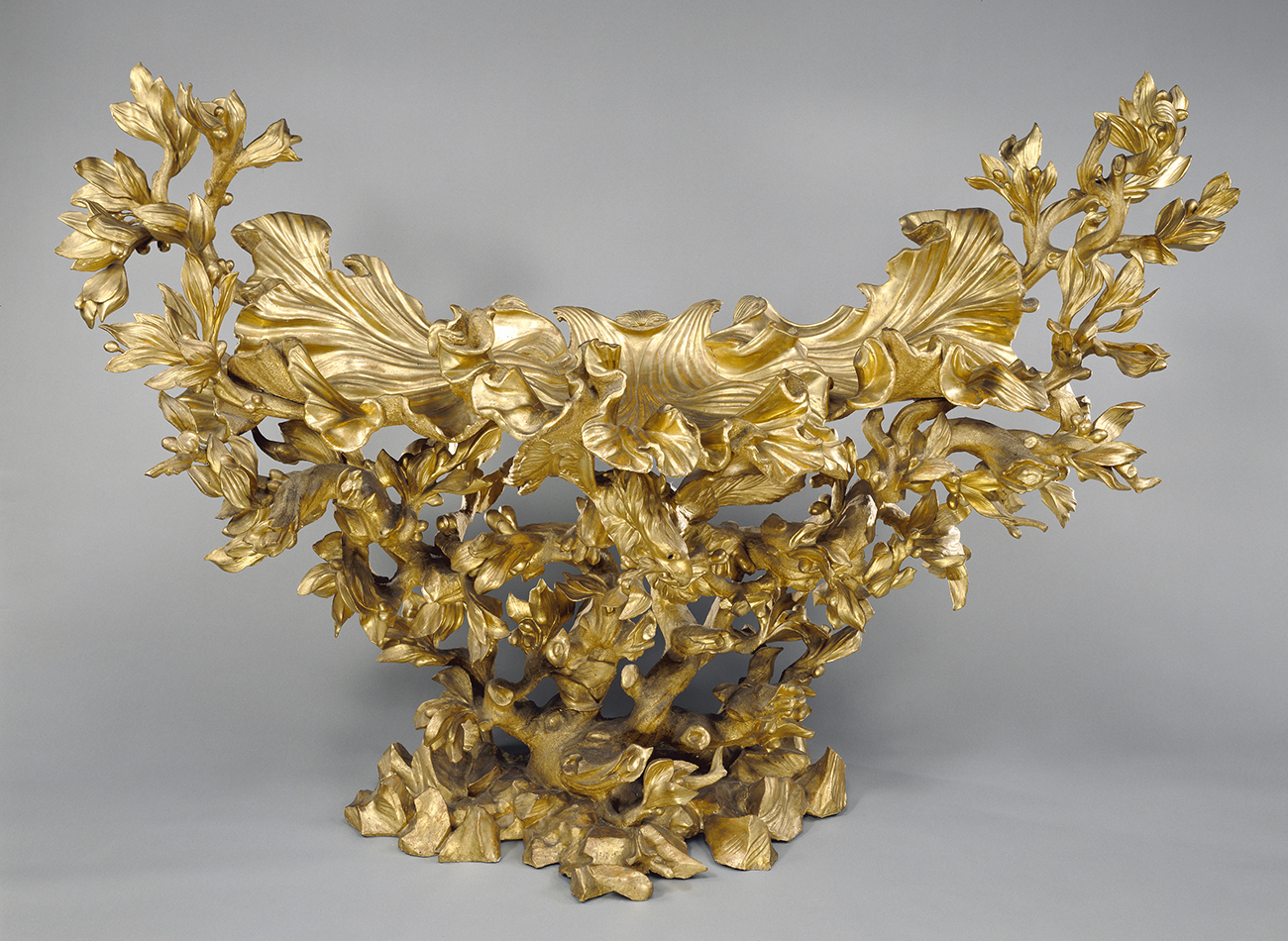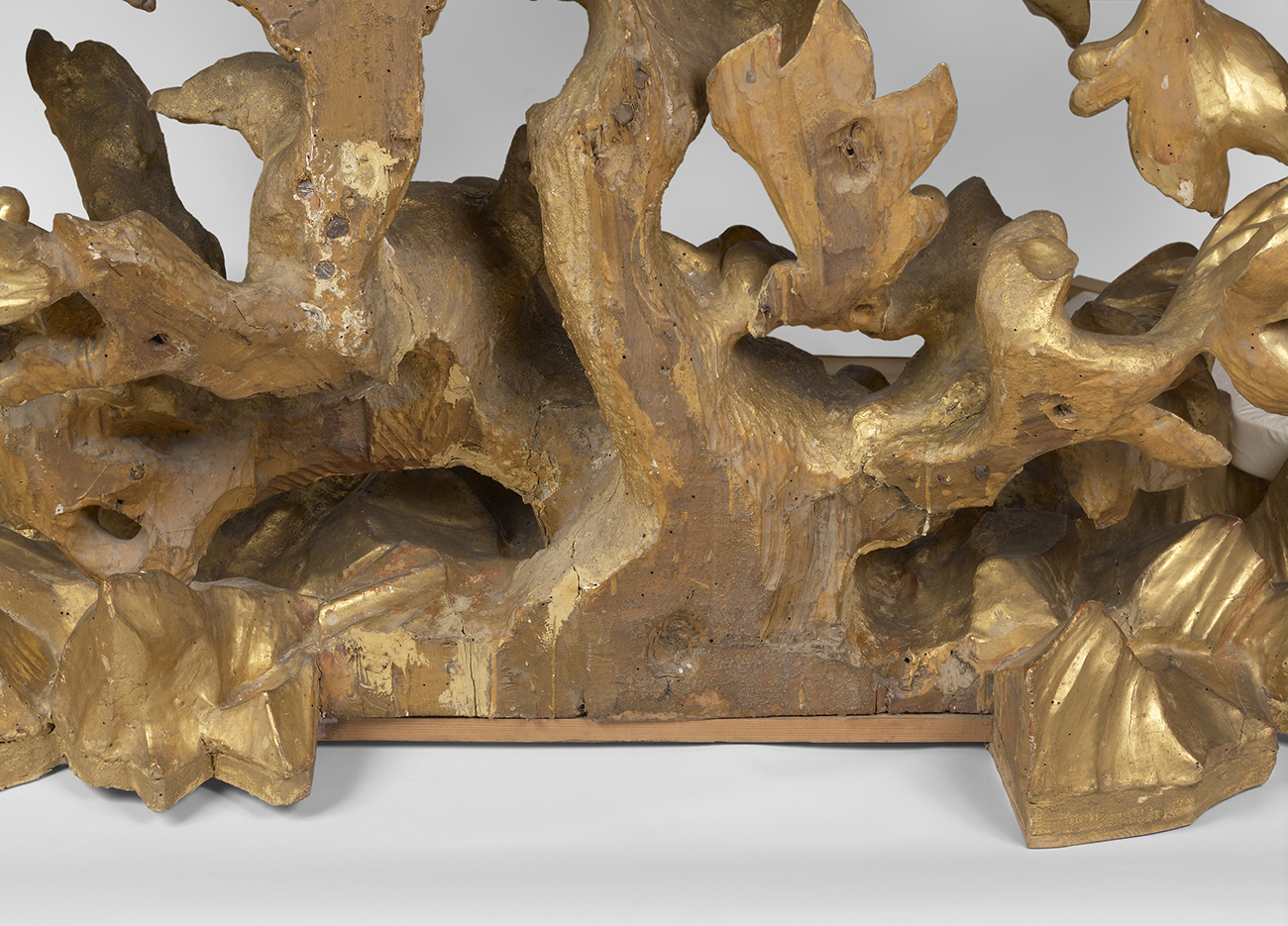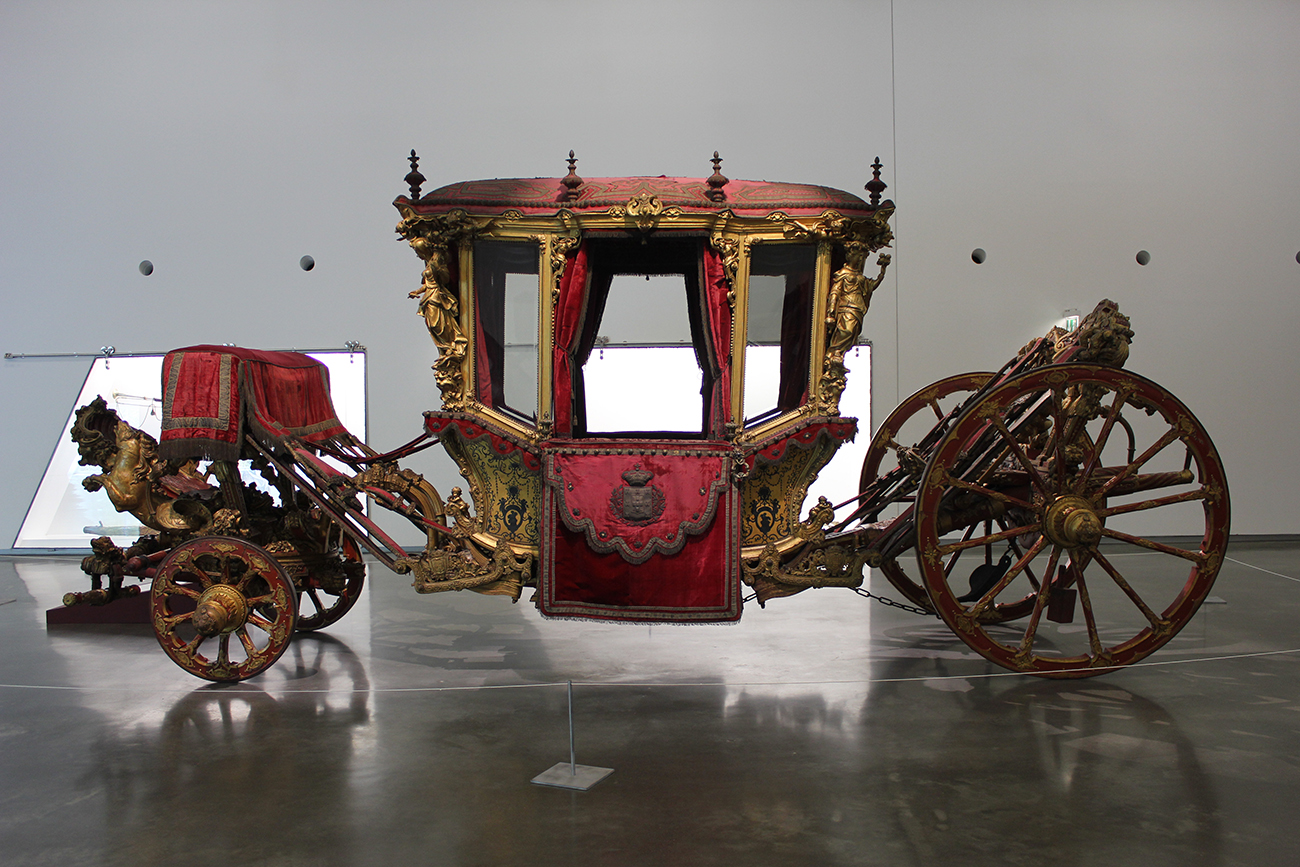In 1986 the Getty Museum acquired an unusual object. Its previous owner of almost 40 years called it simply “Side Table.”
Visually speaking, this word choice is quite odd. Laurel branches sprout from a rocky center. A fierce eagle, branch in beak, emerges from the center. A massive concave shell balances on top of it all. It’s a complex structure that uses materials similar to those in the furniture found in the rest of the Museum’s decorative arts collection, such as carved, gessoed, and gilded wood. But could it actually be used as a side table? There are no flat surfaces anywhere: If you set down a goblet or candle, it would surely topple over. No wonder visitors often ask, “How is this a table?”
This got me to wondering—what is a table, after all?
Perhaps artist Joseph Kosuth can offer some help. His installation One and Three Tables is made of a physical table, a photo reproduction of the table, and the dictionary definition of a table. Which one is the real “table”? Kosuth suggests you need all three parts to decide what a table means.
It’s part of a curator’s job to create meaning, too. When an object is in parts, has an unclear history, an unknown maker, or has a provenance lost to time, curators seek to uncover the truth. They use scholarly expertise and research to give objects context and meaning, and they write labels for the galleries that millions of visitors read and understand as the facts.
I asked curator of sculpture and decorative arts Jeffrey Weaver if he thinks this object really is a side table.

Side Table, about 1670, design attributed to Johann Paul Schor (called Giovanni Paolo Tedesco). Gessoed and gilt poplar, 66 15/16 in. high × 88 1/2 in. wide × 33 7/16 in. deep. The J. Paul Getty Museum, 86.DA.7. Digital image courtesy of the Getty’s Open Content Program
Truthfully, “it probably wasn’t a table,” Jeffrey told me. To figure out what it is, or might be, requires looking carefully at the object, researching its history, and discovering the context around its creation.
We know this “Side Table” is nonfunctional as an actual table. Beyond lacking a flat surface to rest anything on, the back is not completely flat, so it does not fit flush with a wall. Several notches point to the possibility that this object is actually a fragment of something larger. It might be hard to view a seven-foot-long object as a fragment, but if you do, it opens the door to other meaningful, and even more interesting, possibilities.
If it’s a fragment, there are two major theories to what this object could be.
The object was created during the Baroque period (about 1600 to 1750), a time when festivals were more popular even than they are today. These involved massive, elaborate, yet ephemeral structures that were erected for a week, then dismantled and probably disposed of. Sugar sculptures, confetti waterfalls, and parade floats were built with no intent for the objects to last.

Detail of the back of the Side Table
Our table might have been part of just such a larger sculptural set. Dramatic sculptures, inspired by the Baroque master Bernini, were in vogue. The notches and slits in the back suggest it could have connected to additional pieces to form a larger whole. The object contains motifs that might symbolically signify the four elements—such as rock for earth, shell for water, bird for air. Could the reference to fire be missing because the table was once part of a larger whole? Maybe this piece was part of a set celebrating Pan or Bacchus, gods of the grottoes. Maybe it was meant to be a temporary structure, but someone thought it was too nice to part with. Or maybe the multiple pieces were dismantled, resold, and repurposed as separate objects, which often happens to artworks across history.

This early-18th-century ceremonial vehicle given by Pope Clemente XI to Portuguese king João V shows how gilded wooden ornaments would have been attached to a carriage. Courtesy of the Museu dos Coches (National Coach Museum), Lisbon, Portugal. Image © 2016 MuseudosCoches.pt. All rights reserved
The second scenario is that the “Side Table” could have functioned as a decorative feature on a carriage. Unlike carriages of today, 17th-century carriages were elaborate and adorned with excessive details—cherubs, birds, fish, flora, and fauna of all types, just like here. Carriage decorations were also made of gilded wood, a material sturdy enough to last through a festival or parade. The “Side Table” would have functioned perfectly as a decorative feature on the front or back of a carriage.

Today, in the decorative arts galleries in the Museum, the spectacular table-ish object doesn’t look out of place surrounded by similarly flamboyant objects, including actual tables. This is why it’s been called a table by its historical owners and, why, during the three decades it has been with the Getty, our curators have continued to identify it as such in our galleries.
This label is an expert, educated, and scholarly choice based on the object’s “character.” In other words, in its present state, this object shares characteristics with other decorative furniture from the same period that was meant to be placed against a wall. Side tables of the Baroque period were designed as free-standing pieces to be placed along the side of a room. To further complicate matters, the function of “real” side tables was mostly ornamental; they were often designed as part of larger decorative ensembles with, for example, a matching frame for a mirror above, or tall candle stands on either side.
Still, curators agree that our “Side Table” was almost certainly not a side table originally. Former Getty Museum curator Catherine Hess admitted as much in a catalogue entry for this object: “The original setting for the Getty fragment and subsequent history that transformed it into a side table may never be known.”
But, in this case, curators have also decided to identify the object as a side table in our galleries for a very practical reason: It looks more like a table than any other kind of furniture or functional object. So, for now, “Side Table” it will remain.

_______
Explore answers to more art questions all this week on #QuestFest on the Getty Iris. Got your own questions? Join us for #AskACurator Day on Twitter this September 14—or leave me a comment!





Words have always intrigued me. Why is a tree called a tree, or green called green. So if the owner called this a Side Table, it just is. No other explanation is necessary for me to enjoy this piece of art.